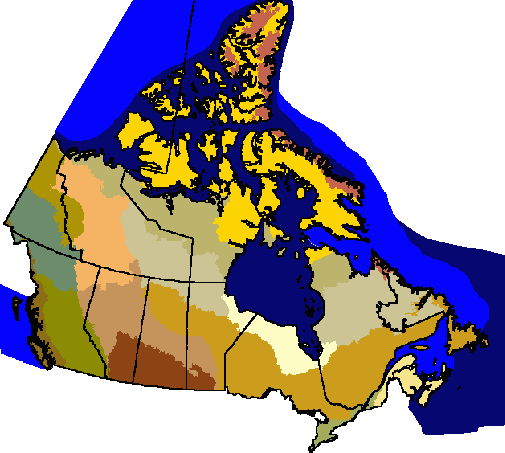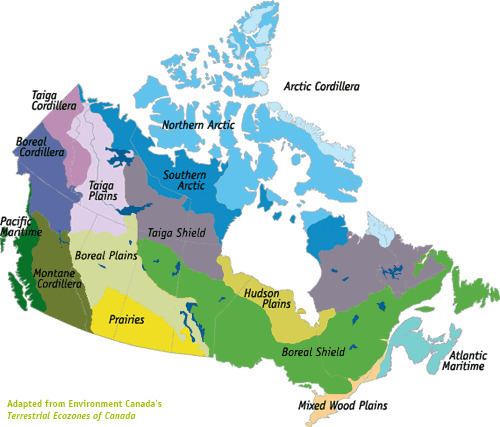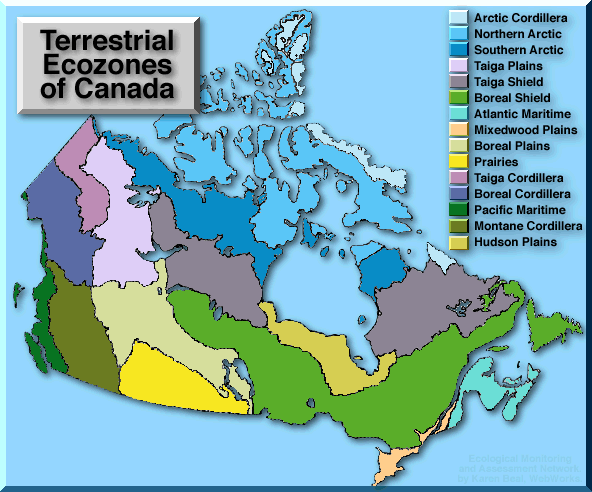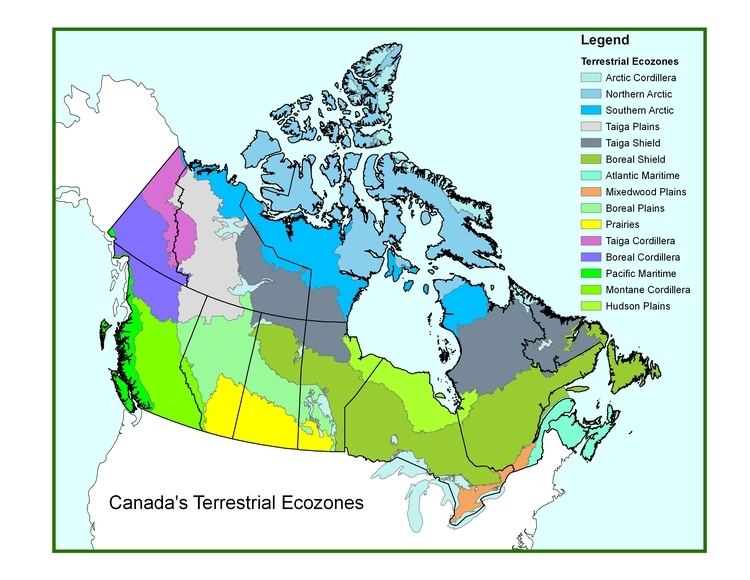 | ||
The ecozones of Canada consist of fifteen terrestrial and five marine ecozones in Canada. These are further subdivided into 53 ecoprovinces, 194 ecoregions, and 1021 ecodistricts. An ecozone is a large sub-continental geographical division with distinct representative biotic and abiotic features in the ecological unit.
Contents

Marine ecozones

The Canadian marine ecozones adjoin to each other, except for the Pacific ecozone which is adjacent to international marine ecozones and terrestrial Canadian ecozones. The largest is the Arctic Archipelago, which actually extends to subarctic regions.
Terrestrial ecozones
The largest Canadian ecozone is the Boreal Shield, an expanse of diverse ecoregions situated on the Canadian Shield.
Subdivisions

The terrestrial ecozones are divided into 53 ecoprovinces. These are major geographical units with a characteristic macro climate, whose constituent physiographic forms, faunal and floral realms, hydrological systems and soils are inter-related. An ecoprovince is fully contained within only one ecozone. These subdivisions were defined in accordance with environmental provisions which established the Commission for Environmental Cooperation in 1994, under the North American Free Trade Agreement between Canada, the United States, and Mexico. These were needed to address ecological issues common to, or overlapping the borders of, the three countries. They are also useful for national and regional planning.

An ecoregion further divides an ecoprovince, though no ecoregion extends beyond one ecoprovince. These geographical units exhibit regional ecological characteristics distinct from neighbouring ecoregions, though there are typically gradual gradations between them. There are 194 ecoregions.
An ecodistrict is a portion of one ecoregion having a unique collection of landforms, fauna, flora, soils, geological composition, and water features. Originally, 1031 ecodistricts were defined, but ten were later removed, leaving 1021 current districts.
Further subdivisions include ecosections, ecosites, and the smallest unit, ecoelements.
